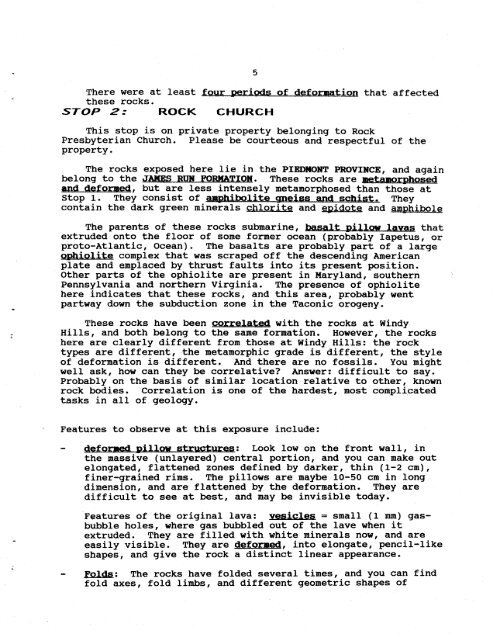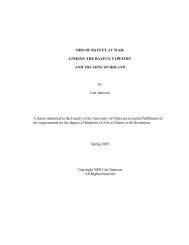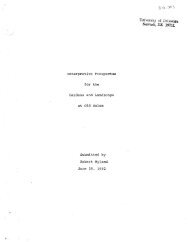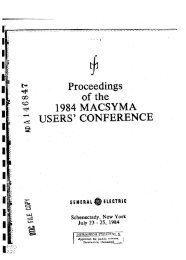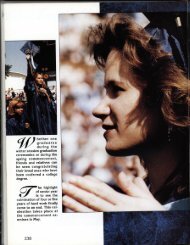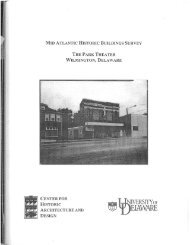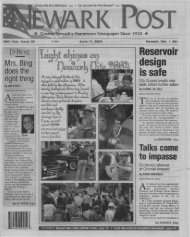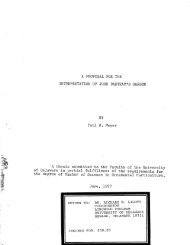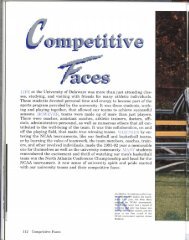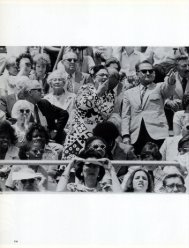FTELD TRIP ACROSS THE APPALACHTAN OROGENIC BELT
FTELD TRIP ACROSS THE APPALACHTAN OROGENIC BELT
FTELD TRIP ACROSS THE APPALACHTAN OROGENIC BELT
Create successful ePaper yourself
Turn your PDF publications into a flip-book with our unique Google optimized e-Paper software.
There were at<br />
these rocks.<br />
5<br />
least four periods of defornation that affected<br />
STOP 2: ROCK CHURCH<br />
This stop is on private property belonging to Rock<br />
Presbyterian Church. Please be courteous and respectful of the<br />
property.<br />
The rocks exposed here lie in the PIEDIIOIIT PROVIIICE, and again<br />
belong to the JAllES RI|X FOR}iAT.IOil. These rocks are netanorphosed<br />
and deforcued, but are less intensely metarnorphosed tGn those at<br />
Stop L. They consist of anphibolitq gmeiss and schis$. They<br />
contain the dark green minerals chlorite and epidote and amphibole<br />
The parents of these rocks submarine, basalt pill-w lavas that<br />
extruded onto the floor of some former ocean (probably lapetus, or<br />
proto-Atlantic, Ocean). The basalts are probably part of a large<br />
ophiolite complex that was scraped of,f the descending Anerican<br />
plate and eurplaced by thrust faults into its present position.<br />
Other parts of the ophiolite are present in l{aryland, southern<br />
Pennsylvania and northern Virginia. The presence of ophiolite<br />
here indicates that these rocks, and this area, probably went<br />
partway down the subduction zone in the Taconic orogeny.<br />
These rocks have been correlated with the rocks at Windy<br />
Hills, and both belong to the same fonnation. However, the rocks<br />
here are clearly different from those at l{indy Hills: the rock<br />
types are different, the metamorphic Arade ls different, the style<br />
of deformation is different. And there are no fossils. You might<br />
well ask, hory can they be correlative? Ansser: difficult to say.<br />
Probably on the basis of sinilar location relative to other, known<br />
rock bodies. correlation is one of the hardest, nost cornplicated<br />
tasks in all of geology.<br />
Features to observe at this exposure include:<br />
defoned Dil1os strugtures: Look low on the front wall, in<br />
the nassive (unlayered) central portion, and you can nake out<br />
elongated, flattened zones defined by darker, thin (L-2 cr),<br />
finer-grained rins. The pillows are maybe 1o-5o cm in long<br />
dinension, and are flattened by the defornation. They are<br />
difficult to see at best, and may be invisible today.<br />
Features of the original lava: vesicles : small (1 nn) gasbubble<br />
holes, where gas bubbled out of the lave when it<br />
extruded. They are filled with white minerals now, and are<br />
easily visible. They are defoned, into elongate, pencil-like<br />
shapes, and give the rock a distinct linear appearance.<br />
Fo1ds: The rocks have folded several times, and you can find<br />
fold axea, fold linbs, and different geonetric shapes of


